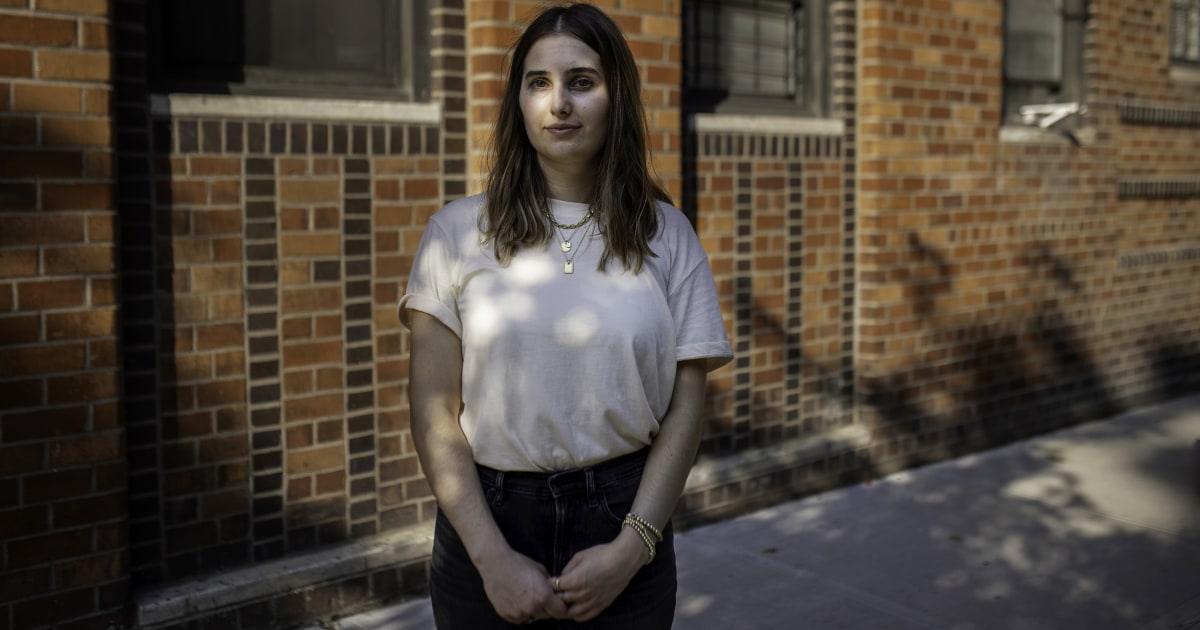
Jasmine Perillo, a 26-year-old digital strategy consultant who has lived in New York City for eight years, has never found it as difficult renting an apartment as she has this summer. After one of her roommates moved home and the other moved uptown, Perillo began a seven-week journey at the end of May to find an apartment as her return-to-office date neared.
After looking at more than 60 apartments, attending open houses where as many as 30 people showed up and expanding her search to all of Manhattan, she found everyone was returning to the city and looking for a place to rent. She finally found a studio apartment in the West Village for under $2,500 a month.
“The lines ended up being everywhere. I thought it was gonna be only downtown, but, yeah, some of the crazier lines were on the Upper West Side,” she explained. “Never seen the market like this. It’s actually insane.”
As New Yorkers return to the city — or arrive for the first time — with expectations to return to work or in-person classes in the fall, they have flooded the rental market looking for anything they can find.
According to recent data from real estate brokerage Douglas Elliman, more new leases, excluding renewals, were signed in Manhattan, Brooklyn and the northwest part of Queens last month than any other July in over 10 years.
“Everybody who you speak to in the industry knows that this is a crazy, crazy market now,” said Raymond Gani, a real estate broker for Misrahi Realty Group. “I don’t think it’s ever been a summer where there has been so many people interested [in] every apartment that comes up.”
To be fair, rental prices for New Yorkers have yet to return to levels seen at the start of the pandemic. According to data from StreetEasy, Manhattan median asking rent hit $3,000 last month for the first time since July 2020. But that’s still below a high of $3,500 seen in March 2020, before prices started to come down. In Brooklyn, median rent rose to $2,600 in July, a $100 jump since June and $100 difference from the March 2020 high of about $2,700. Median rent in Queens rose to $2,200 last month, inching closer to — but not quite matching — the high of $2,400 seen in March and April of last year.
On the other hand, rent discounts — once a pandemic staple — are falling. In Manhattan, rent cuts hit their lowest level in a decade in July, falling nearly 25 percent year-over-year to 9.5 percent, according to StreetEasy. Rent cuts dropped 15.3 percent in Brooklyn and 11.7 percent in Queens last month compared to a year ago.
Typical market
Some New Yorkers who anticipated this frenzied market tried to get ahead of the crowds and returned to the city earlier.
Sasha Minovsky, who works as an operations associate at the travel nursing firm Nomad Health, returned to the city in June to get settled in before she has to return to the office in September. She left the city at the beginning of the pandemic last year and moved to Iowa with her partner, who is from there.
“I think I got in at the right time,” she said, referring to the price at which she rented her apartment.
But that has also meant these renters are back in the city as the delta variant takes hold and more companies delay their return-to-work dates. In early June, Griffin Kao, a product manager at Google, signed a three-bedroom lease with two friends in the Gramercy, East Village, area after living and working from home for a year back in his hometown of Philadelphia, following college graduation in May 2020.Even though his office return was delayed from September until October, he is relieved to have rented when he did.
“I kind of wanted to, like, you know, to start my new life in New York,” said Kao. “And hopefully it’s only like one or two months.”
Big return
The renters who are returning now are facing a market with far more demand and less supply. According to StreetEasy, inventory levels in Midtown, the Financial District, East Village, Battery Park, Chelsea, Greenpoint and Downtown Brooklyn in July were below what they were during the same time in 2019.
“We are seeing that rates for rental inventory dropping this summer is a bit faster than it was two years ago, the last time when we had seasonality comparisons for July,” said Nancy Wu, an economist at StreetEasy and Zillow. “Right now, not only are we getting seasonal effects but we’re also getting the effects of people moving back to the city all at once.”
Gani — who rents in neighborhoods like the Lower East Side, SoHo, Nolita, Tribeca, Upper East Side and Hell’s Kitchen — has seen the imbalanced supply and demand pool while showing units to clients this summer.
“Last year, we had, let’s say, 500 apartments but only 50 people looking. This year, we have 500 people looking and only 50 apartments,” he said. “There’s a surge of people coming back into the city, but there’s not a lot of inventory.”
Ignoring delta
Even the recent rise in cases caused by the delta variant has not stopped Gani from receiving a flood of emails, texts, calls and StreetEasy messages. Earlier this month, the broker said he received 99 inquiries via StreetEasy within the first day of listing a two-bedroom apartment on Rivington Street in the Lower East Side renting for $3,500.
Becki Danchik, a real estate broker for Warburg Realty, who represents clients in Manhattan, is seeing similar trends. Earlier this summer, Danchik said she received 300 inquiries across seven apartment listings in less than one day.
“Between last year and now, the rental market has gone from zero to 100,” she said. “It takes me like hours to just respond to people.”
Wu noted downtown neighborhoods that young people are eager to return to are the most in demand.
“We are seeing that the inventory numbers in East Village, in a lot of areas of downtown Manhattan, are dropping way faster than they are in Upper East Side, or even areas in Brooklyn, where we’re seeing generally less demand from the younger, more mobile renters,” Wu said.
But as neighborhoods with fewer young people remain less desirable, Wu recommended that aspiring tenants broaden their search, like Perillo did.
“It’s a very hard time for the market,” she said. “But it’s definitely a possibility to research and see other neighborhoods and consider the tradeoffs there.”
Source: | This article originally belongs to Nbcnews.com










